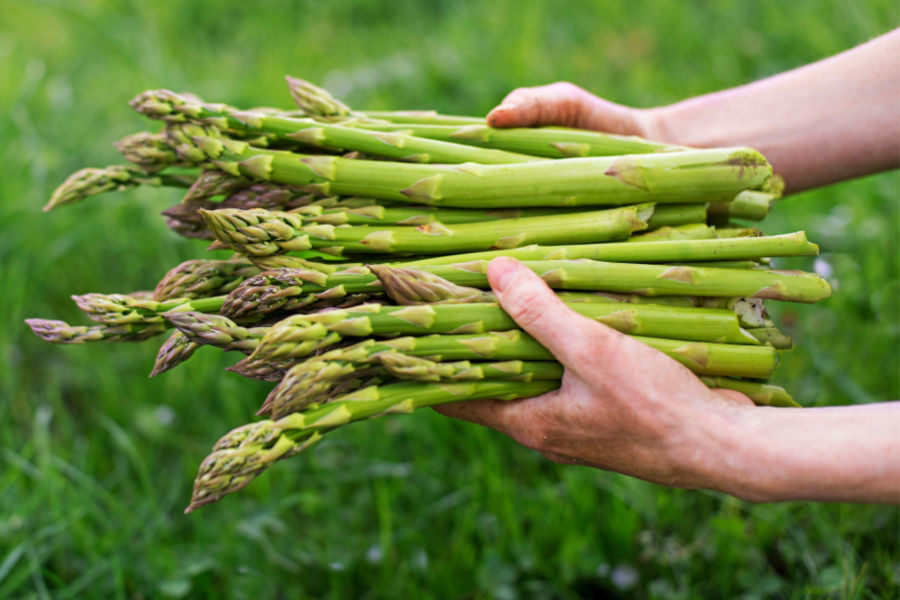Introduction
So, you’ve got a hankering for some fresh, homegrown asparagus? You’re in the right place! Growing asparagus might seem like a task for green-thumbed garden gurus, but fear not! With a bit of know-how and some elbow grease, anyone can grow this delectable veggie right in their backyard. So, what is the easiest way to grow asparagus? Let’s dive in and uncover the secrets to asparagus-growing success!
Why Grow Asparagus?
Before we jump into the nitty-gritty, let’s talk about why you’d want to grow asparagus in the first place. Here are some compelling reasons:
- Delicious Flavor: Freshly harvested asparagus has a unique, nutty flavor that’s miles ahead of store-bought varieties.
- Nutritional Benefits: Asparagus is packed with vitamins, minerals, and antioxidants, making it a healthy addition to any diet.
- Cost-Efficient: Growing your own asparagus can save you money in the long run, especially if you’re a fan of this gourmet veggie.
What is Asparagus and Its Varieties?
Before planting your asparagus patch, it’s essential to understand what asparagus is and the different varieties available.
- Common Asparagus: This is the most widely grown variety, known for its green spears.
- Purple Asparagus: This vibrant variety has a slightly sweeter flavor and turns green when cooked.
- White Asparagus: Grown in the dark to prevent chlorophyll production, resulting in its pale color and mild taste.
Getting Started: Preparing the Soil
Now that we’ve covered the basics, it’s time to get our hands dirty! Proper soil preparation is crucial for asparagus success.
Soil Requirements
- Well-Drained: Asparagus hates soggy feet! Ensure your soil drains well to prevent root rot.
- Nutrient-Rich: Asparagus is a heavy feeder. Amend your soil with compost or aged manure to provide essential nutrients.
- pH Level: Aim for a slightly acidic to neutral pH level, ideally between 6.5 and 7.5.
Steps to Prepare the Soil
- Clear the Area: Remove any weeds or debris from the planting area.
- Amend the Soil: Mix in compost or aged manure to enrich the soil.
- Test the pH: Use a soil testing kit to check the pH level and adjust as needed.
Planting Asparagus: From Crowns to Harvest
Now that our soil is ready, it’s time to plant our asparagus crowns! But what are crowns, you ask? Well, they’re essentially the roots of the asparagus plant.
Choosing the Right Time to Plant
- Early Spring: Plant asparagus crowns as soon as the soil can be worked in the spring.
- Late Fall: In warmer climates, you can also plant in late fall.
Steps to Plant Asparagus Crowns
- Dig Trenches: Dig trenches about 6-8 inches deep and 12-18 inches wide.
- Spacing: Place the crowns about 18 inches apart, with 4-6 feet between rows.
- Cover with Soil: Fill in the trenches with soil, leaving the tips of the crowns just below the surface.
- Water: Give your newly planted crowns a good drink of water to help them settle in.
Caring for Your Asparagus Patch
Growing asparagus is a bit of a waiting game. While you won’t be harvesting in the first year, proper care is essential to ensure a healthy, productive patch for years to come!
Watering and Feeding
- Watering: Asparagus requires consistent moisture. Water deeply once or twice a week, depending on rainfall.
- Fertilizing: Feed your asparagus patch in early spring with a balanced fertilizer to promote healthy growth.
Weed Control and Mulching
- Weed Control: Keep weeds at bay by regularly hoeing or hand-pulling them from the bed.
- Mulching: Apply a layer of organic mulch to help retain moisture and suppress weed growth.
Harvesting Asparagus: Patience is Key
Ah, the moment we’ve all been waiting for! But remember, patience is key when it comes to harvesting asparagus.
When to Harvest
- Second Year: Resist the urge to harvest in the first year. Allow the plants to establish a strong root system.
- Subsequent Years: In the second year, you can start harvesting when the spears are about 6-8 inches tall.
Harvesting Tips
- Cutting Method: Use a sharp knife to cut the spears just below the soil surface.
- Frequency: Harvest regularly, but don’t cut all the spears. Leave some to mature and fern out to feed the roots.
FAQs
Q: Can I grow asparagus in containers?
A: While it’s possible, asparagus has deep roots and prefers a spacious environment, making it challenging to grow in containers.
Q: How long does asparagus take to grow?
A: Asparagus is a long-term crop, taking 2-3 years from planting to the first harvest. But trust us, it’s worth the wait!
Q: Is asparagus easy to maintain?
A: Once established, asparagus is relatively low-maintenance. Regular watering, weeding, and feeding are all it needs.
Conclusion
So, what is the easiest way to grow asparagus? With the right preparation, care, and a sprinkle of patience, anyone can grow this gourmet veggie in their backyard. From soil preparation to harvesting, we’ve covered everything you need to know to enjoy a bountiful asparagus harvest for years to come. So, roll up those sleeves and get ready to dig into the world of asparagus growing! Happy gardening!
